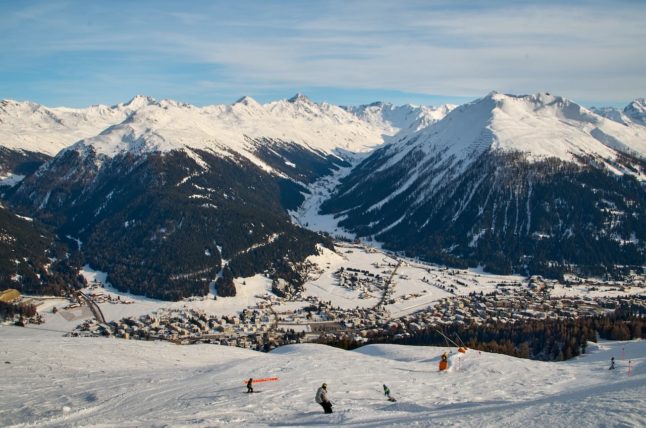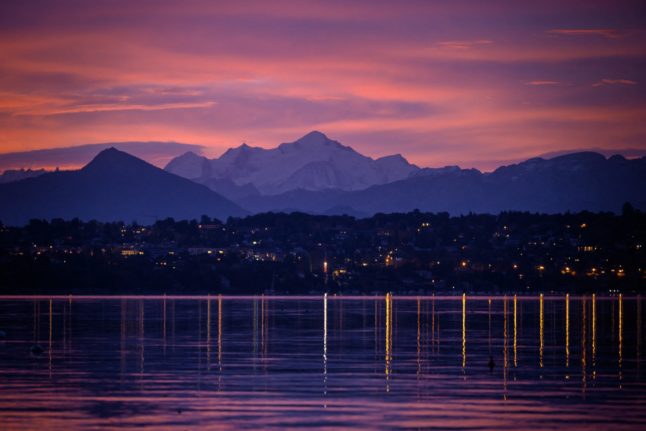The ski season in Switzerland usually begins in December and runs until the end of April.
However, weather and snow conditions permitting, you may just be able to hit the slopes as early as November this year.
November 2023
If you’re hoping to get a head start on the slopes, we have good news for you. Some Swiss ski resorts, such as the La Robella in Jura, are set to open from early November. While the family resort is on the small side (15 km2 ski area), it is accessible to everyone – beginner or pro, skier or snowboarder.
Adult sports fans can take in the magical scenery for 29 Swiss francs (day rate) as they whisk down the pistes of Val-de-Travers, which is easily accessible by train from Neuchâtel. Children (up to 18 years old) pay 22 Swiss francs, while seniors and children aged 8 years and under can ski for free.
According to bergfex, the resort is set to open on November 1st alongside the following Swiss ski resorts:
Crêt-du-Puy – Jura & Drei-Seen-Land
Chapeau Rablé – Jura & Drei-Seen-Land
Les Breuleux – Jura & Drei-Seen-Land
Les Bugnenets Jura & Drei-Seen-Land
Les Genevez – Jura & Drei-Seen-Land
Zermatt – Wallis
From November 2nd, winter sport enthusiasts can head to Ovronnaz, a small holiday resort with a thermal spa at an altitude of between 1400 and 2500 metres.
Additionally, these ski resorts in Switzerland will also open their slopes next month:
Mythenregion – Luzern (November 3rd)
Nendaz / 4 Vallées – Wallis (November 7th)
Davos Klosters Parsenn (November 10th)
Veysonnaz / 4 Vallées – Wallis (November 18th)
Engelberg Titlis (November 18th)
Obergoms – Valais (November 18th)
On November 23rd, the international Silvretta Arena in Samnaun/Ischgl – with 239 kilometres of slopes and 45 modern lifts in Switzerland and Austria – opens its doors to winter sport athletes.
READ MORE: Swiss Alps ski resorts set to re-open but skiers face rise in prices
From November 25th, you can also ski here:
Corvatsch – Graubünden
Corviglia – Graubünden
Davos Jakobshorn – Graubünden
Seebodenalp – Luzern
Chäserrugg – eastern Switzerland
December 2023
December marks what some call the traditional ski season start in Switzerland and as such sees some of Switzerland’s largest (and most famous) resorts send down their first ski lift of the winter season.
Describing itself as a glamorous winter playground, Verbier – the main resort of the 4 Vallées ski area – attracts visitors with its phenomenal skiing (the summit of Mont Fort is the highest peak in the 4 Vallées), high-quality accommodation and outstanding restaurants and bars. The resort opens on December 4th this winter season.
See below the December opening dates for Swiss ski resorts:
December 1st
Aeschi – Berner Oberland
Habkern – Berner Oberland
Selital – Bern and Bern region
St. Cergue – Vaud/Geneva
December 2nd
Arosa Lenzerheide – Graubünden
Brunni-Bahnen Engelberg – Lucerne
Flims Laax Falera – Graubünden
Jaun Gastlosen – Freiburg Region
Lenk – Berner Oberland
Savognin – Graubünden
Tanzboden – eastern Switzerland
Urnäsch – eastern Switzerland
December 6th
Crans-Montana – Valais
December 8th
Aletsch Arena – Valais
Lauchernalp – Valais
READ MORE: Swiss ski resorts won’t survive without artificial snow: study
December 9th
Airolo – Pesciüm – Ticino
Ghöch – Zurich
La Dôle – Vaud/Geneva
La Tzoumaz – Valais
Pizol – Ostschweiz
Rochers de Naye – Vaud/Geneva
Scuol Motta Naluns – Grisons
Brambrüesch – Graubünden
December 10th
Elsigenalp – Berner Oberland
Obermutten – Graubünden
December 15th
Anzère – Valais
Obersaxen Mundaun – Grisons
December 16th
Arolla – Valais
December 17th
Thyon / 4 Vallées – Valais
On Christmas eve, the village of Les Marécottes makes for the perfect winter break destination. In addition to hiking and skiing opportunities, visitors can also drop by the nearby Alpine zoo to see wolves, foxed, black bears, wild boards and many rare birds.
The ski resort, which is nestled between Chamonix, Verbier and the Portes du Soleil, is ideal for families and benefits from 100 percent natural snow cover. This year, the resort is set to open on December 24th.
The last ski resorts to open in Switzerland in December are the Davos Pischa in Grisons and the Kiental in Berner Oberland. Both will welcome winter sports enthusiasts from December 26th.
January 2023
Fribourg-based Les Paccots already had to close last year’s season early due to poor weather conditions. This season, it is scheduled to open on January 20th.
Les Paccots – which first opened doors 85 years ago – has a maximum altitude of 1500 metres, 11 lifts and 1 night ski slope. An adult day ticket will set you back 39 Swiss francs, while apprentice students pay 31 Swiss francs and children (up to 16 years old) pay 27 Swiss francs.



 Please whitelist us to continue reading.
Please whitelist us to continue reading.
Member comments